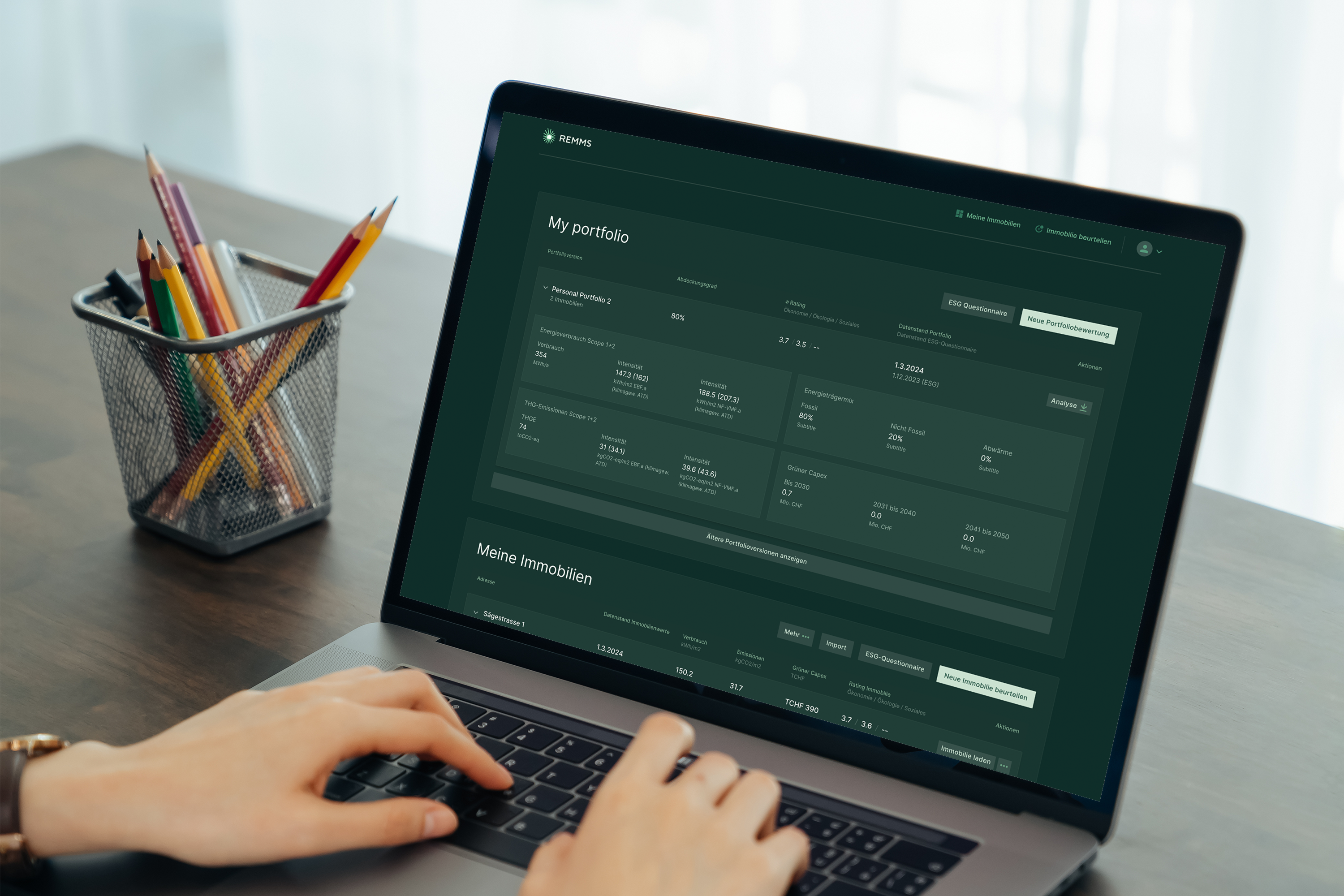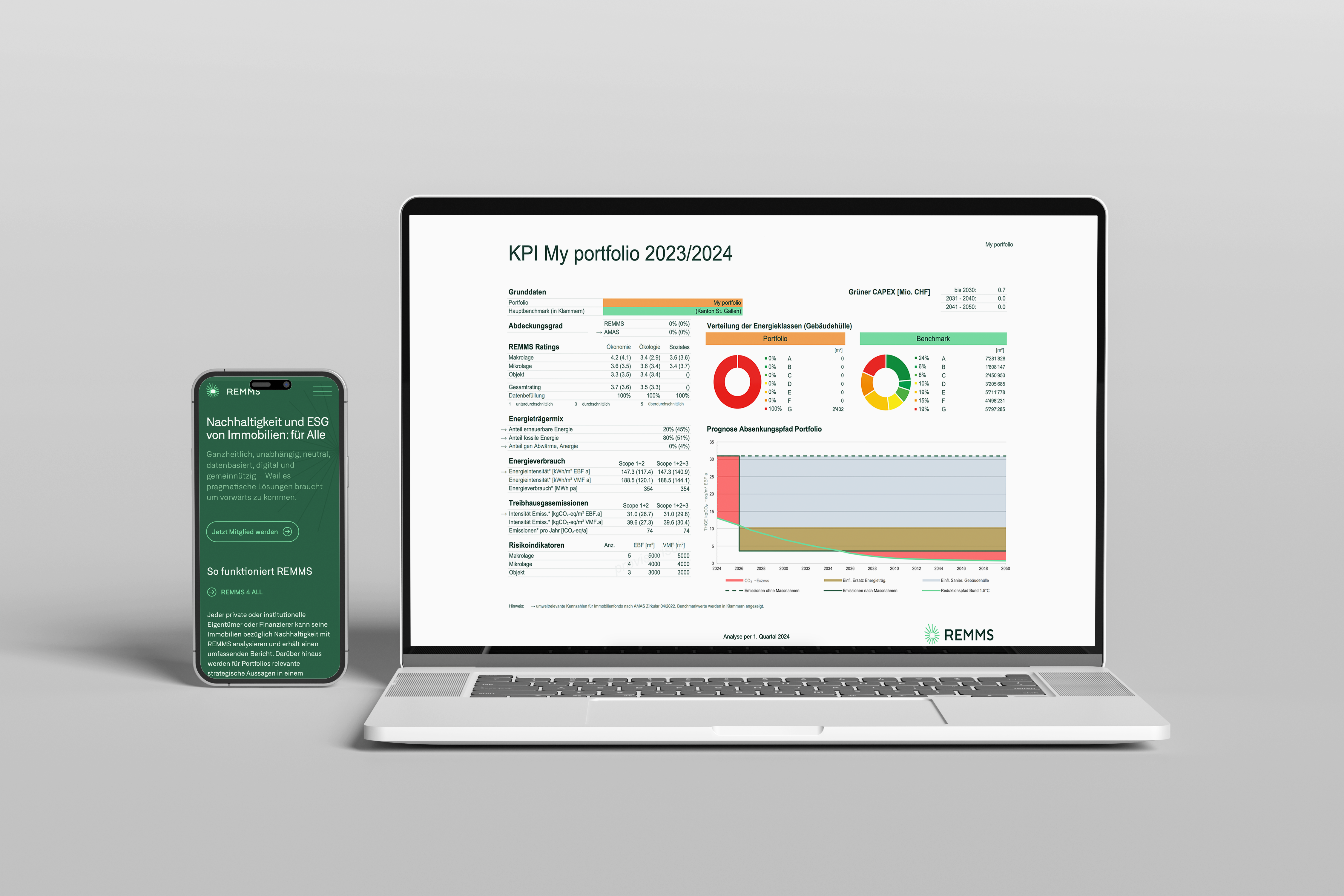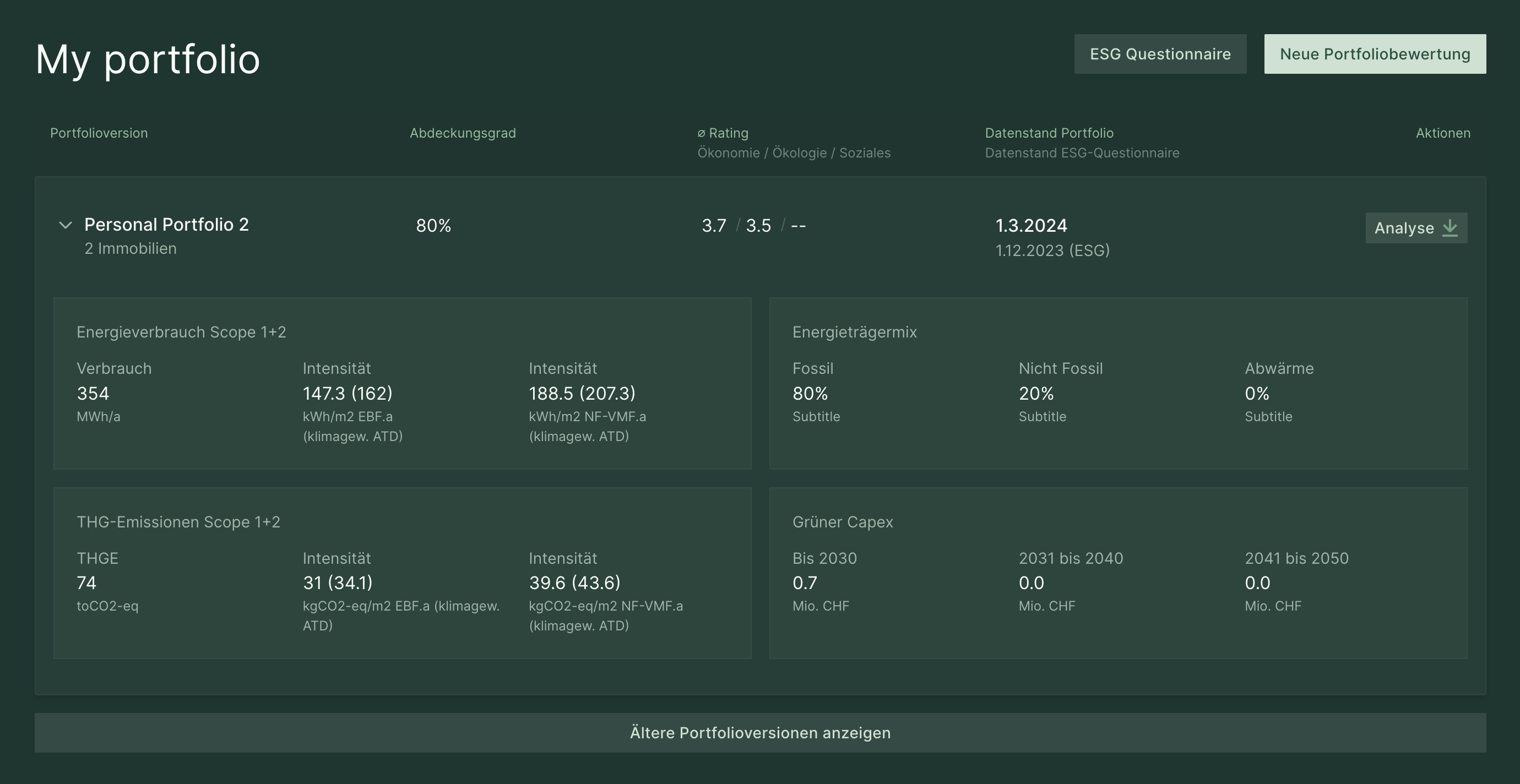REMMS 4 ALL
Sustainability assessments of real estate
REMMS stands for Real Estate Meta-rating and Monitoring on Sustainability. The association is committed to data-supported and objective sustainability assessments of real estate. Both private and institutional real estate owners can use REMMS to analyse their properties with regard to various sustainability criteria. The reports take into account all standards such as AMAS, ASIP, CRREM, GRI, ICMA, SBA and SFDR.
Private real estate owners enter the most important property details in an intuitive form and receive a report enriched with benchmark market data from the interface in no time at all. A new version can be generated at any time via a dashboard, for example to reflect the installation of a photovoltaic system in the rating.
Institutional customers benefit from the option of providing detailed information for each individual real estate. For portfolios with a large number of real estate, an import function makes the recording process considerably easier. The entire portfolio can be summarised and evaluated in a single report. Thanks to the ESG questionnaire, governance issues can be covered too.
Provided Services
Link to project



REMMS stands for sustainability. It’s crucial, therefore, that we implement the platform with a partner who shares these values. With Renuo, we have found a partner who delivers the desired quality quickly and reliably.
Dr. Stefan Fahrländer, CEO REMMS
From plasmic to Rails and back
To design the frontend, we used Plasmic, an intuitive, code-free design tool that enabled efficient collaboration between our development team and the design department.
However, the most important part of the implementation was the interface to the API to ensure that all data was recognised in the right way and reports were generated correctly. By using Rails Admin, REMMS was able to respond quickly to user needs and efficiently manage customisations and translations in the application. Both the REMMS 4 ALL application and the associated website were developed with the help of Plasmic. REMMS maintains the content and its multilingualism directly in the CMS of Plasmic.
The appealing UI/UX design, which characterises both the application and the website, was realised in close collaboration with our partner and art director Henry Gillis .


